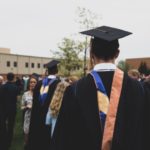When I was in college working on my chemical engineering degree, I thought I was a pretty good student because I carried a 3.5 GPA. But looking back now, it was basically controlled chaos.
I procrastinated on assignments and got distracted while studying and would waste hours. I’d walk into exams not sure if I’d get a C or an A, and ditto for the essays I’d write. I didn’t really have a consistent “approach” towards my studies.
Several years out of college I stumbled upon the work of Cal Newport, a Computer Science Professor and productivity guru. I was taking online classes while working full time so that I could get into an economics PhD program, a complete career shift. I needed to walk into exams knowing I would get an “A”, while studying as little as possible to ensure I had a life outside work.
Cal Newport’s book “How to Become a Straight-A Student” was the first book I read on the science of learning and it absolutely transformed my studying approach, giving me the results I wanted. I only wish I read it before I started my engineering degree.
I believe Newport was still an undergraduate student when he set about writing it. He was interested in developing a system to consistently get good grades without having to live in the library. In other words, being a non-grind straight-A student.
In fact, when asked what one skill was most important in becoming a non-grind straight-A student, most of them cited the ability to get work done quickly and with a minimum of wasted effort. … So how do these students achieve this goal? A big part of the solution is timing—they gain efficiency by compressing work into focused bursts. To understand the power of this approach, consider the following simple formula: work accomplished = time spent x intensity of focus.
Cal Newport, How to Become a Straight A Student
What changed after I read it? I now “get” how learning happens. No longer is it a mystery to me if I should read the textbook to prepare for an exam or if some other activity will have higher payoff, there’s a clear rank in my mind of which tasks will result in the most learning per hour spent (hint: reading the textbook will usually be the very last thing you want to do).
The book covers various topics like writing essays, and preparing for exams, but in this post, I’ll discuss how learning works. These ideas aren’t well understood and underlie a lot of the academic problems students have.
How to Study for Maximal Learning
Newport’s basic idea is that work accomplished (learning) = time spent x intensity of focus.
Passive Activities
Reading the textbook is generally passive, therefore, generally a waste of time. Casually rereading your class notes? Same thing. Hanging out with your friends while studying? Also passive. Or my favorite: studying while watching a movie.
Active Activities
Learning happens under active processing. This is why the “quiz and recall” method is one of the most effective methods for learning rapidly. Yes, it’s hard and intense, but if the goal is to learn the material, it’s the fastest path there is.
When the solution to a problem is laid before you and you read through it thinking, “yeah that makes total sense, I get it”. Your mind is essentially lying to you, a phenomenon known as “the fluency illusion”. That’s why all passive approaches are ineffective. The learner is convinced they fully understand as they engage in the passive activity.
The true test of learning, however, is to cover up the solution and see if you can solve the problem on your own. It’ll become clear to you right away if you actually understand it or not. Of course, if you get stuck, that’s what the solution is there for. But now you will be using it actively, not passively staring at it.
Whether it’s philosophy or calculus, the most effective way to imprint a concept is to first review it and then try to explain it, unaided, in your own words. If you can close your eyes and articulate an argument from scratch, or stare at a blank sheet of paper and reproduce a solution without a mistake, then you have fully imprinted that concept. It’s not going anywhere.
Cal Newport, How to Become a Straight A Student
For non-mathematical courses, you can still use the quiz-and-recall method, but in a slightly different way. Newport calls this the “technical questions” approach. You create your own questions for yourself based on the notes or assigned readings and try and answer them.
“Explain Supply and Demand”. “Explain the citric acid cycle”. “What are the different theories of ethics”. You get the idea. Essentially this is the “flash cards” method, but with all kinds of concepts.
The only rule is, you must answer the questions in writing or out loud. If you can do it, great, you understand the concept. If not, that’s what the textbook and notes are for, and if needed, the Professor. Failing to explain it shows you what you don’t understand. Realizing your weak spots is valuable information since you can easily shore them up before your exams.
Note: It’s not that you shouldn’t read the textbook, but just that active learning means being strategic and purposeful with how you use it.
As the name implies, active learning techniques ask you to engage with the material actively. I discussed the quiz and recall method as the prime approach. Try to solve the problem on your own. Explain the concepts in your own words. If you can do these, you pretty much understand it.
Energy Management or How to Study Effectively
You may be fired up to try out the active learning approach now but there’s one more important thing to discuss. Active studying is intense and thus energetically costly. Trying to implement it straight up will leave you exhausted and burned out. So how do you deal with this?
The solution is to actively manage your energy.
Study in segments lasting 30 to 60 minutes, then take a 10 minute break to walk around, have some water, stretch, and use the restroom. Then you can jump back in with renewed focus for another session.
Taking regular breaks is just as important as studying intensely. You really can’t have one without the other. The mind needs regular breaks to perform at its best, and that’s just the way it is.
Also important is to get enough sleep, eat healthy snacks throughout the day, avoid being overcaffeinated (jittery), and to study at the times at which you are most capable of being focused (usually the morning for most people).
Other Recommendations
That’s it! If you enjoyed this article, I think you’ll love Newport’s book. Another great book on this topic, especially for STEM fields is Barbara Oakley’s “A Mind For Numbers“.



